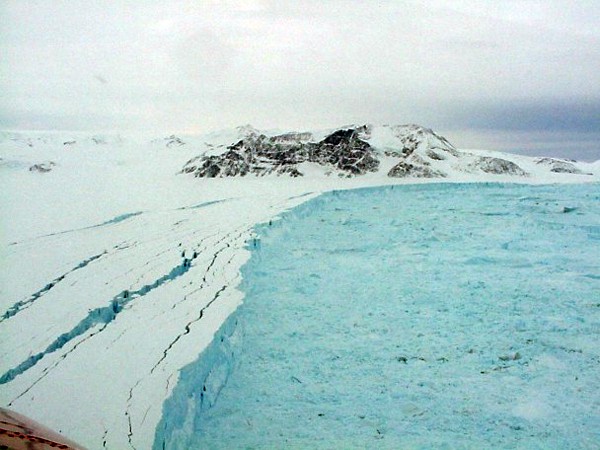
 Scientists monitoring a large rift in the Antarctic ice shelf known as Larsen C report that it has grown 22 km longer in just five months, threatening the stability of the shelf which experts say is likely doomed to break off sometime within the next few years.
Scientists monitoring a large rift in the Antarctic ice shelf known as Larsen C report that it has grown 22 km longer in just five months, threatening the stability of the shelf which experts say is likely doomed to break off sometime within the next few years.
“As this rift continues to extend, it will eventually cause a large section of the ice shelf to break away as an iceberg,” says the report by Project Midas, a collaborative project based in Wales, United Kingdom.
Antarctica contains an estimated 90 per cent of the world’s ice and the majority of its fresh water supply. The continent is almost completely covered by ice sheets over a kilometre deep, with the coastlines supporting floating ice shelves like the Larsen C. The largest of three ice shelves located along the east coast of the Antarctic Peninsula, Larsen C’s impending break-up has been predated by the deterioration of Larsen A in 1995 and the loss of Larsen B which broke off in 2002. The current crack in Larsen C measures 350 metres in width and the chunk of ice set to calve off as the crack expands is estimated to be about 6,000 square kilometres -a little larger than the size of Prince Edward Island, representing between nine and twelve per cent of Larsen C’s total volume, says Martin O’Leary, glaciologist at Swansea University and Midas researcher.
“It’s hard to tell how soon it could break –we really don’t have a good handle on the processes which control the timing of the crack propagation,” O’Leary said. “It’s a lot like predicting an earthquake – exact timings are hard to come by. Probably not tomorrow, probably not more than a few years.”
Coastal ice shelves serve the purpose of holding back glaciers from flowing into the sea, and thus their break-up – attributed to a warming planet – ultimately adds to the rise in sea levels. Scientists say a total disintegration of Larsen C would increase planetary sea levels by roughly ten centimeters or four inches.
“It will also be a shame if the Larsen C ice shelf disappears,” says Midas team member Daniela Jansen. “I have spent so much time now looking at the satellite images, and I really love this ice shelf. It would be such a tragic thing to see this thing go.”
A new study has revealed details about how Antarctica’s ice sheet reacted during the onset of the last great planetary warming, approximately 21,000 years ago. Scientists studying how long rocks along Antarctica’s Atlantic coast had remained free from ice cover found that the West Antarctic Ice Sheet reached a “tipping point,” causing it to thin out relatively quickly – it lost 400 metres of its thickness over a 3,000 year period and lifted planetary sea levels by up to two metres as a result.
“West Antarctica has undergone complex changes since the last Ice Age,” says Andrew Hein of the University of Edinburgh’s School of GeoSciences and co-author of the study. “And it quickly became unstable – similar processes may dominate the future of the region in a warmer world.”
Leave a Reply
You must be logged in to post a comment.



 Share
Share Tweet
Tweet Share
Share




Comment